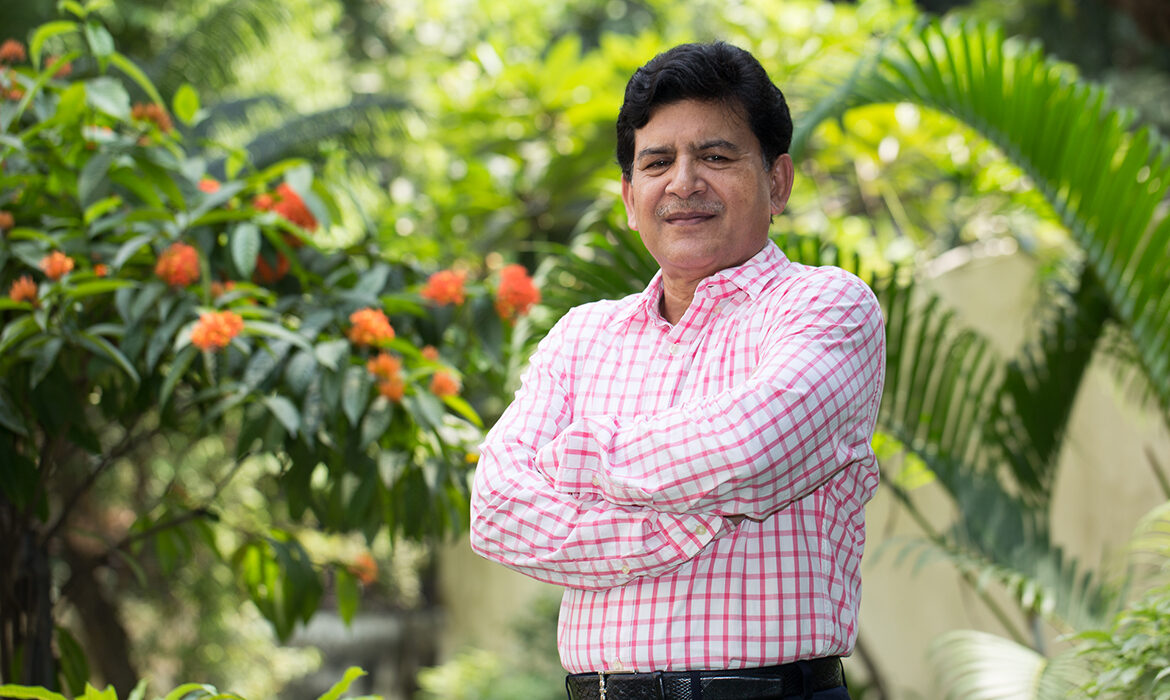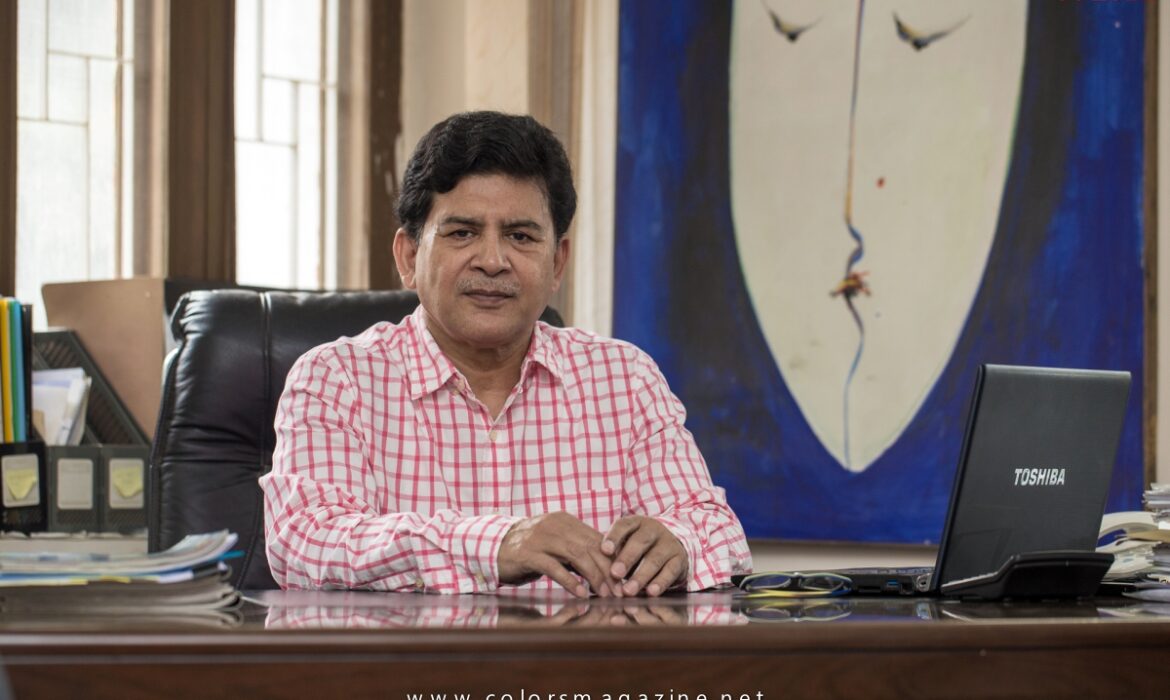The Vulnerable New Poor
The survey ‘Poverty Dynamics and Household Realities’ conducted jointly by Power and Participation Research Centre (PPRC) and BRAC Institute of Governance and Development (BIGD) identifies that the 1st wave of coronavirus has left 20 million “new poor”. Color’s Alvia Zaman Shrishty catches up with the Executive Chairman of PPRC, Dr Hossain Zillur Rahman to understand the impact the pandemic has had on the GDP.

Over one year into the pandemic, we are faced with a second wave of COVID-19 and stricter lockdowns that are stunting the life and livelihood of our citizens. In order to assess the situation, a population of about 7000 slum residents were surveyed from all over Bangladesh. This survey hopes to raise awareness towards the distress that the underprivileged are going through and prepare policies and provide fiscal help in accordance with it.
THE “NEW POOR”
A trend has been observed among the people above the poverty line who are within a band of vulnerability. In the face of a crisis, they tend to go under the poverty line. During the ongoing 2nd wave of COVID-19 of a significant number of them being affected are finding it difficult to stay afloat. At other times they usually fight their way back up, but such is not the case especially with the strict ongoing lockdowns. The people facing this adverse economic reality have been termed as the “new poor” by Hossain Zillur Rahman, Executive Chairman of PPRC. They have to be distinguished from the traditional poor because their expectations are different. They are not in need of any immediate sort of food relief. Most of them are looking forward to getting back to their earlier living standard and the income opportunities that made way for it.
BASIS OF ANALYSIS OF THE NEW POOR
The poverty line income is determined by the government of Bangladesh each year. Naturally, people who earn less than that fall under the poverty-stricken category. The government statistics have a distribution consisting of the database of all degrees of income. The median income is observed, which encompasses 50% of the population’s income. PPRC calculated the people between the poverty line and the median income. The population of people falling under this particular range was declared to be the vulnerable new poor. He informed that through their survey the exact percentage of them actually went down below the poverty line and have struggled to come back up even after a year was calculated. Data was collected from a large sample of 6099 people from all over Bangladesh. “If I extrapolate from our findings and the national data, in March 2021 there were about 24.5 million people identified as the new poor.” They will be joining the group who were already under the poverty line,” he remarked.
EFFECT OF THE 2ND WAVE ON THE GDP
The GDP growth figures are currently being scrutinized and for good reasons. It is a summation of a lot of factors including poverty. So he thinks that people have been rightly questioning how come there has been a GDP growth while a large population of people is falling under the poverty line each passing day. Data from this class of people is also taken into account ultimately when calculating the GDP. Nevertheless, Bangladesh has been resilient, he noted. A factor that has contributed to it, according to him, is the robust agricultural growth. This particular sector has not been affected by corona. The RMG sector earnings have also more or less been the same. These two sectors are the biggest contributors to the GDP. We often forget that agriculture contributes around 10% to it. The RMG manufacturing sector contributes just less than 35%. Foreign remittance has been crucial in keeping us afloat and that has nothing to do with the corona here in Bangladesh. 55% of the GDP however is accounted for by the service sector dominated by SMEs who have been hit the hardest due to strict shutdowns in place. The macro indicators like RMG and agriculture are showing some resilience. The micro-level household data is however showing distress.

ROLES OF THE GOVERNMENT POLICYMAKERS
Policymakers made a mistake last year by thinking the COVID-19 crisis was going to be short-lived. That risk assessment has not been borne out. “Now we should have more of a long term approach. RMG and the agricultural sector received a lot of support in order to continue their business. However, the finance minister has been reluctant to address the issues faced by the new poor and provide support accordingly.” The government has recently announced new support packages for them post-shutdown. Hossain Zillur Rahman believes the support has to come in two forms- fiscal and policy. During this period if the transportation cost or electricity pricing is increased, it is going to make it more difficult for people to cope up. The SMEs require support and implementation so far has been poor. The government should look into these matters as well next to placing safe health measures.
NGOS LENDING A HELPING HAND
Hossain Zillur Rahman who has been appointed as Chairperson of BRAC in 2019 also pointed out how the NGOs are standing beside the people in these tough times. Because of the graduation from LDC, the fund flow for NGOs from abroad has dried up. The donor community is more reluctant to donate now and many of the NGOs do not have sufficient funds. The government has not been very supportive of them either. There exist a lot of restrictions to the sectors they can work in. Despite that, NGOs are trying to do as much as they can particularly at the community level because that’s where their strength lies. They can come to community and government by being involved in the list preparation of the new poor, he said. BRAC, for example, out of their own fund has announced that they will be helping out an additional 50000 of the enlisted new poor population. Within their limited means, they are trying to do as much as they can.
COMBATING WITH RESILIENCE
People adapt in one of two ways either with strength or despair. Teachers in the pandemic have resorted to odd jobs just to survive. This wasn’t necessarily a positive adaptation; nevertheless, this had to take place. Income has reduced, and in order to adapt, consumption has to be decreased. New innovation, reducing consumption, picking up jobs that don’t commensurate with their skills are some of the adaptation methodologies that people have been adapting. These are examples of adapting to distress.
Nevertheless, he suggested that we have to remain hopeful but not mindlessly optimistic. A lot of thinking is required in terms of the improvement of our health system. Corruption needs to be eradicated and the system should be more efficient. There is no option available other than to be resilient and fight back in order to survive, he concluded. It is vital to thoroughly reform the policies in order to stand beside the vulnerable. Equally, the government and people need to do their best in facing this major crisis with courage.


